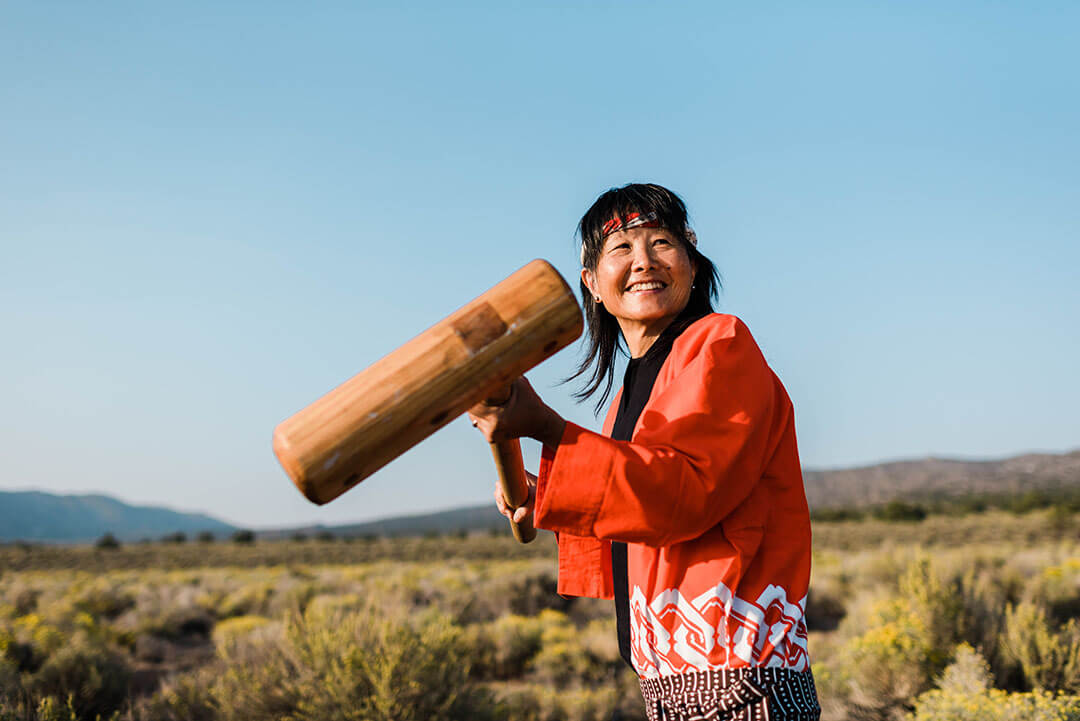Reno-Tahoe is a happy mix of international cultures. Here, we delve into locals’ stories and favorite recipes.
As our community has increasingly become home to people from all over the country and the world, Reno-Tahoe has truly become a kaleidoscope of food cultures. These can be experienced every day, not only in our restaurants but also within many diverse neighborhoods, and in homes, places of worship, clubs, and special events. Indeed, our region has — perhaps surprisingly — become a culinary mecca.
In the following pages, you’ll meet locals who are finding ways to share their heritages through food and are helping to make Reno-Tahoe a delightful mix of tastes and techniques. We hope you’ll be inspired to step out of your own culinary comfort zone and explore the wide world of flavors around you, because, as Argentinian restaurateur Martin Mariani points out, “Let’s face it, who wants to eat the same food every day?”
Cooking at Home
Chrisie Yabu is a fourth-generation Japanese American. Despite growing up entirely in the United States, she often feasted on traditional Japanese cuisine as a young child. It was mostly served by her mother, a homemaker, and grandparents, each of whom took traditional Japanese recipes and made them their own. For Yabu, that meant tables brimming with donburi (rice bowl), tonkatsu (pork cutlet), and shabu shabu (hot pot dish of meat and vegetables) — all of which she cooks in her own kitchen today, sometimes using the sukiyaki cookware passed down from her grandfather.
Yabu and several others in the Japanese community have said the Japanese restaurants in Reno usually don’t serve the same types of foods they grew up eating, so those are dishes they tend to make at home. The ingredients often can be found at Asian markets, which abound in our area. For certain specialty Japanese items, however, Yabu says there’s only one market in the local area that is likely to carry them: Yim’s Produce & Seafood in Sparks.
“It allows me to cook more freely in that way because I know [Yim’s market] has the stuff I need,” Yabu says. “If I can’t find something there, I’ll need to go to Sacramento or get it shipped from Amazon or something.”
When children are present, a few more dishes hit the table at Yabu’s house, including curry rice, onigiri rice balls (rice with gnocchi), and chashu kinori.
While Rina Johari was growing up, her mom cooked every day, with much of it being native Singaporean dishes.
“There was no such thing as leftovers in our house,” Johari says.
Fortunately, for Johari’s favorite dishes, those recipes were passed down — mee goreng (fried noodles), asam pedas ikan pari (stingray in spicy broth), and many more. But her favorite is nasi ayam (chicken rice), which sometimes even makes its way to the table for all three meals in one day.

What many don’t know about Singapore is that it’s a multiracial and multicultural country, comprised of Chinese, Malay, Indian, and Eurasian people. Johari is Singaporean Malay, so a lot of her favorite dishes have roots in Indonesia and Malaysia, and she enjoys cooking many of these recipes today.
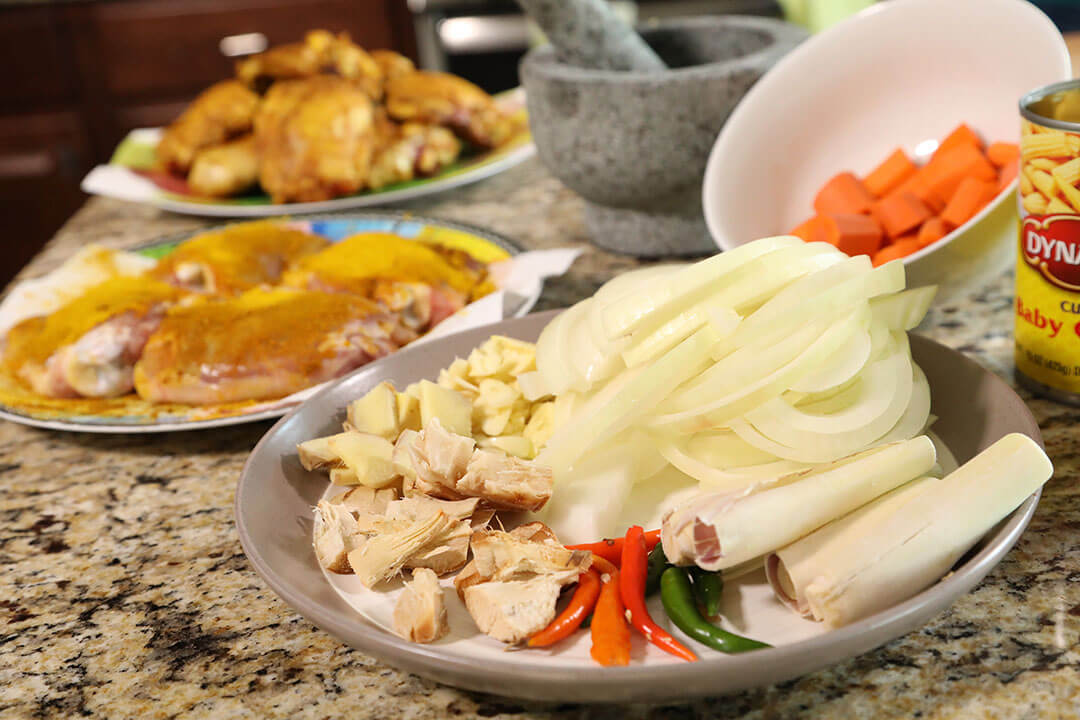
“Food is my love language, and I turn into an artist when I’m in the kitchen,” Johari says.
Asian markets, again, are the best place to get the necessary ingredients for these dishes that simply aren’t available at your local supermarket, but even with a diverse network of foodies in Reno-Tahoe, some ingredients still are impossible to find locally. To make her full, traditional spread of Singaporean dishes, Johari relies on monthly care packages sent by her mother.

“I mainly cook for my family and friends to share the joy of food,” she says.
Finding the Tastes of Home
When Johari wants the familiar tastes of home without having to cook, she turns to Tee Jay’s Corner Café in Carson City, an Indonesian restaurant serving dishes that deliciously represent both Singaporean and Indonesian cuisine well.
“When I first tried Tee Jay’s beef rendang, it brought me back to my teenage years when I used to steal a bite from the simmering pot,” Johari recalls, adding that a lot of the menu reminds her of trips to Bali.
For some others, however, the tastes of home aren’t as easy to find. That was the case for Argentinian couple Martin and Nash Mariani.
Argentinian culture is a bit of a melting pot itself, with influences from Italy, Spain, and Germany, thanks to an influx of immigrants from these countries to Argentina in the early 20th century. As a result, much of the cuisine in the South American country is rooted in European culture.
At Empanash, an Argentinian restaurant and catering company in South Lake Tahoe, the Marianis, who own the business, focus on empanadas — hand pies made with flaky dough stuffed with mouthwatering fillings.
“It is said that the origin of empanadas was in Persia, centuries before Christ,” Martin says. “They were made in ancient Greece with phyllo dough. From there it caught on in Armenia, traveling through Morocco, then through all of the Middle East.”
Much like tacos in Mexico, empanadas became popular among blue-collar workers who needed a meal that was easy to eat on the go, stuffed with satisfying meats and vegetables.
“As the recipe kept traveling, the dough changed and varied depending on traditions and agriculture of the country,” Martin explains.
Yet, the couple says, Argentinian cuisine has been under-represented in the Reno-Tahoe area, which is what led them to open Empanash. The restaurant actually was started on a whim: When Martin was sick and stuck at home, Nash decided to try her hand at making empanadas. As they are both Argentinian with Italian heritage, empanadas — derived from the word empanar, meaning to wrap or coat with bread or dough — are a part of their culture. Using a recipe of water, flour, and butter passed down by Martin’s mother, Nash set out to perfect it. When moving onto the fillings, she skipped the often-unpopular, traditionally Middle Eastern additions of raisins and olives, in order to appeal to Americans.
Martin and Nash both began selling the empanadas at their jobs and, later, local farmers’ markets. A network of faithful customers, many of whom are Argentinian themselves, kept pushing for a more permanent solution to their empanada cravings, so the couple eventually opened a brick-and-mortar restaurant in South Lake Tahoe. It also satisfied Nash’s desire for herself and her family to be entrepreneurs.
“With word of mouth, we have become quite popular in our community,” Martin says.
And while the Marianis have a storefront from which to sell their cuisine, they don’t tire of making Argentinian dishes at home. Empanadas are a dinner table staple for the couple when entertaining.
Speaking of under-represented cuisines in Reno-Tahoe, Radi Rejoub, whose family owns Aladdin’s Market & Kitchen in Midtown Reno, says the business was built to meet a similar need. In 1984, Rejoub, a 22-year-old immigrant from Jordan, came to the U.S., eventually landing in Reno, where he noticed a severe lack of Mediterranean restaurants and stores. In order to share his culture with neighbors, he opened Midtown Market in 2014, eventually closing it and reopening the business as Aladdin’s Market & Kitchen in 2018 in a nearby building. Aladdin’s focuses on Mediterranean products that are not easily found in Reno, including a wide selection of spices, olives, and desserts. With his wife, Naaz, he hopes to serve the community by providing an authentic cultural experience.
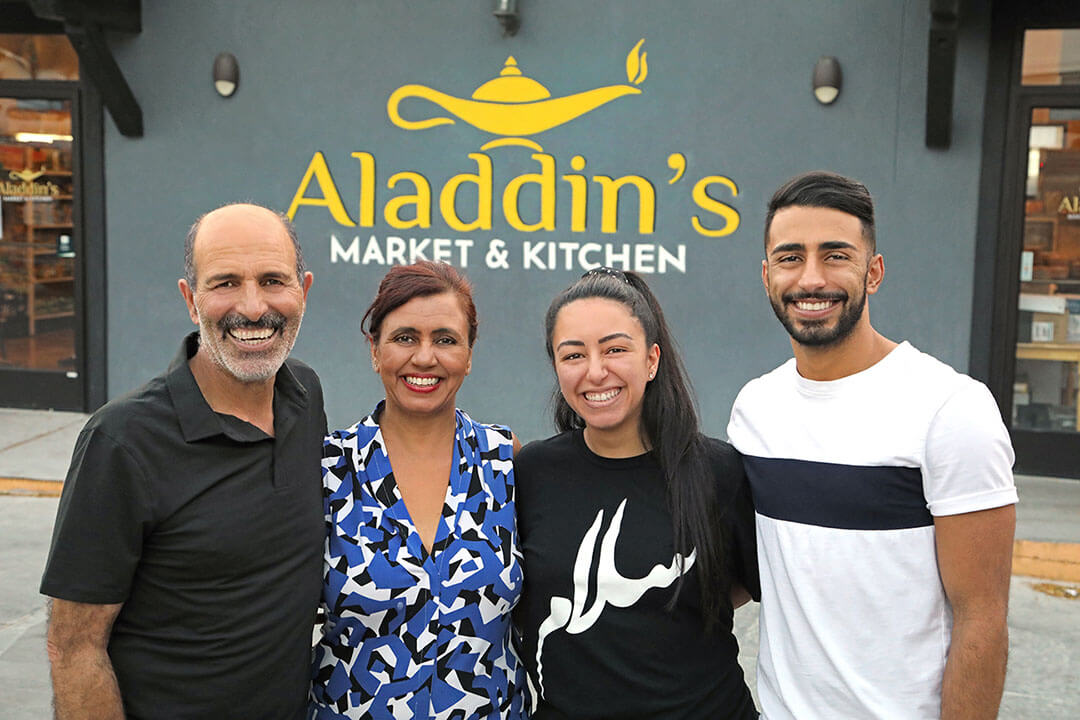
“Our main mission as a business is to share a piece of our culture with others in the Reno area,” Radi says. “Supporting our local communities and providing more accessible options for halal meat as well as other products has truly fulfilled any expectations we’ve had of Aladdin’s.”
Aladdin’s not only shares favorite dishes with the community through its kitchen, which offers an array of authentic Mediterranean dishes, from hummus and falafel to baba ganoush and shawarma, but its market provides home cooks with the ingredients they need to prepare such dishes themselves, or even to add flair to dishes from any corner of the world.
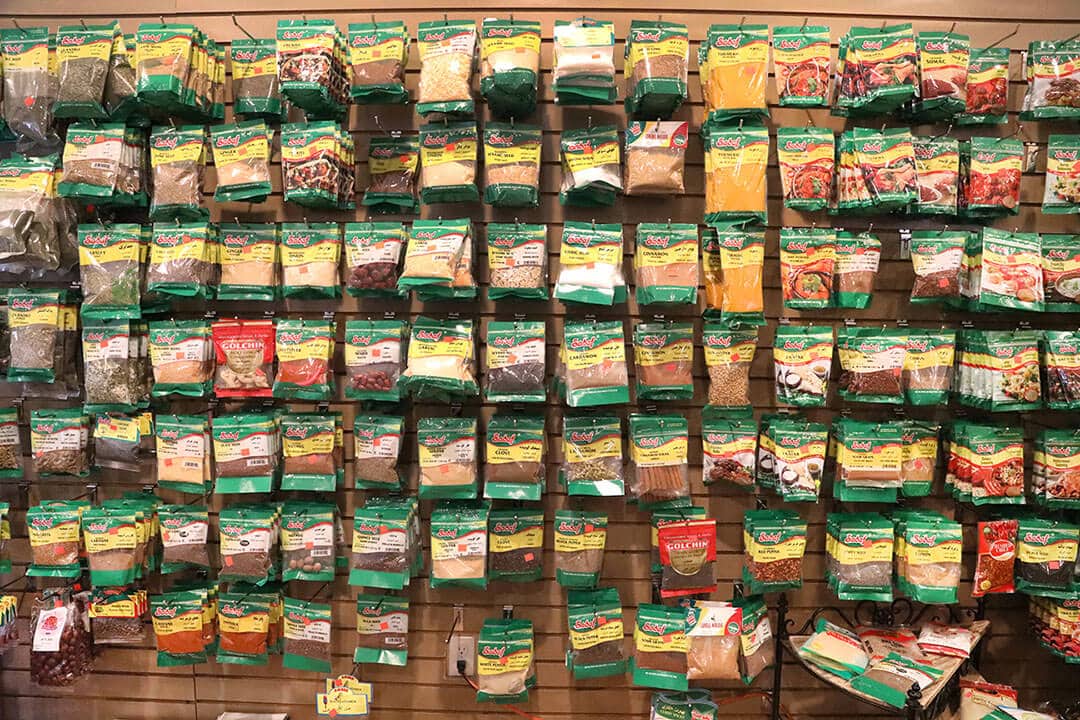
“Trying new foods will do more than just widen your horizons. It can help you eat healthier, introduce you to different cultures, and add creativity into the dishes you make at home,” Radi says.
While it is necessary to have a community of immigrants bringing cuisines to Reno residents, the openness of those residents is equally important.
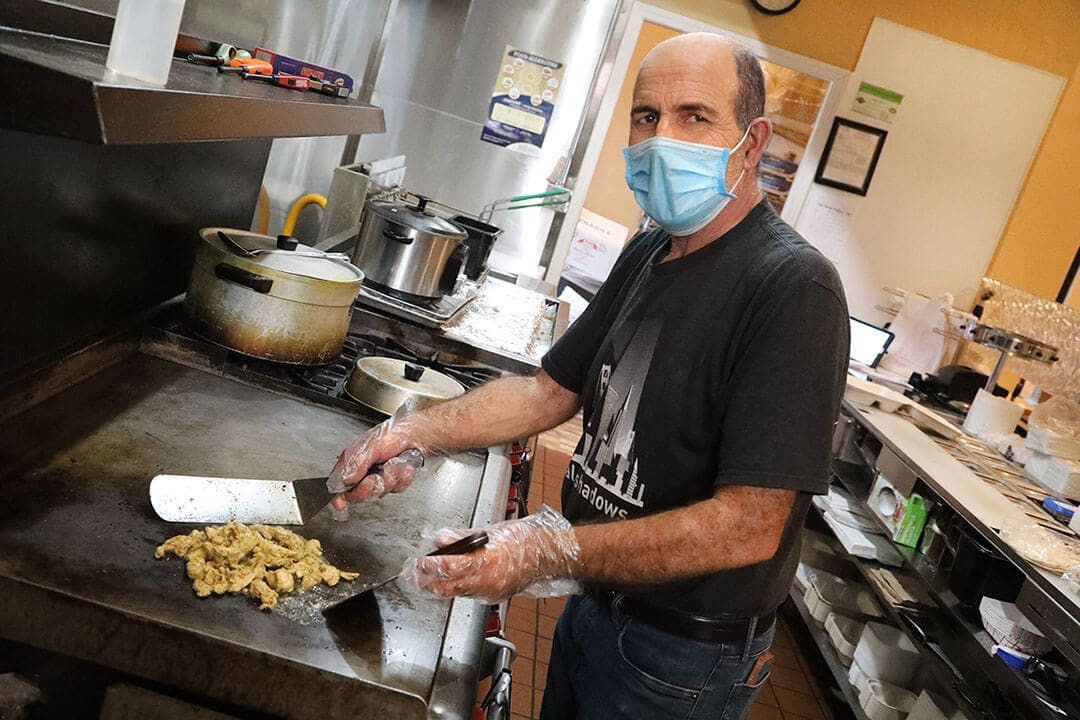
“We get new customers in Aladdin’s every day who are curious about our food and products, and instead of finding them different or strange, they are excited to see something new and even more excited to try it,” he says.
He explains this is due, in part, to an already thriving and diverse selection of restaurants in the Reno-Tahoe area, which have opened locals’ eyes (and stomachs) to unfamiliar foods.
Festivals Aplenty
The Reno-Tahoe area’s abundance of special events and festivals offer another way to experience international cuisines. Tasting the food of other countries is a quick introduction to those cultures and their customs.
Every October, Reno’s Eldorado Resort Casino hosts its Great Italian Festival, which brings home cooks and professional chefs together to cook Italian dishes. The festival’s grape stomp is an example of embracing not just the food but also the traditions that make the food what it is.
Similarly, in Fallon, Festa, an annual Portuguese festival taking place each May, offers an opportunity for attendees to sample Portuguese dishes. It’s also a time to explore the folklore that runs deep in the city’s Portuguese genes and pay homage to the ancient Festivals of the Holy Ghost, or Festas do Espírito Santo. Its history dates back nearly 700 years, when it is believed that Queen Saint Isabel saved Portugal from a terrible famine by striking a bargain with the Holy Spirit — her crown in exchange for food. At this annual festival in Fallon, guests can enjoy such Portuguese delicacies as piri piri chicken and sopas do espírito santo (holy ghost soup).
While there is no shortage of Japanese restaurants in Reno, Chrisie Yabu and Rieko Shimbo, a Reno resident who grew up in Tokyo, agree that it’s hard to come by Japanese cuisine that isn’t Americanized.
“More Japanese businesspeople are moving into Reno now, so I am hoping to see more authentic Japanese food available here,” Shimbo says.
In the meantime, festivals offer an authentic experience. Held around the country, the Obon Festival is one of the biggest cultural events representative of and celebrating the Japanese culture and experience. Started in the U.S. by Japanese immigrants, the event is a Buddhist custom to honor the spirits of one’s ancestors. Music played on a taiko drum is the soundtrack to the festival, which may also be the best place to enjoy an authentically Japanese meal, such as okonomiyaki (cabbage pancakes), takoyaki (octopus balls), yakisoba (fried noodles), watagashi (cotton candy), ramune (soda) chicken or beef teriyaki, sushi rolls (makisushi), deep-fried tofu filled with sushi rice (inarisushi), and sweets such as manju (sweet bean cakes), which are served at vendor booths. Locally, the annual event takes place at the Reno Buddhist Center in July or August.
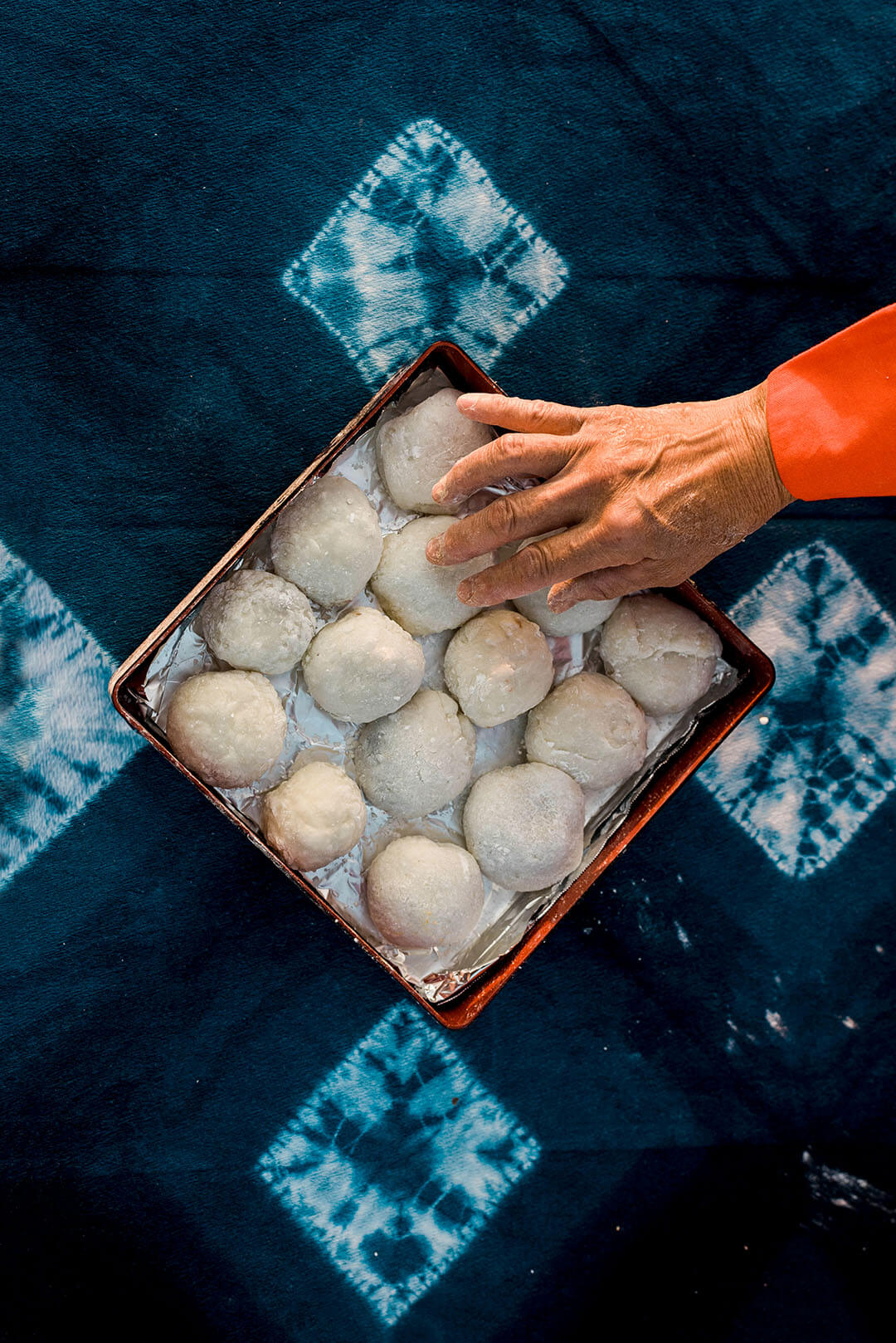
In December, the tradition of making mochi in celebration of the New Year brings everyone from toddlers to grandparents together to pound steamed sticky rice in a wooden or stone mortar, called usu, with a big wooden mallet, or kine. Mochi making is a community event, enjoyed in neighborhoods all over Japan.
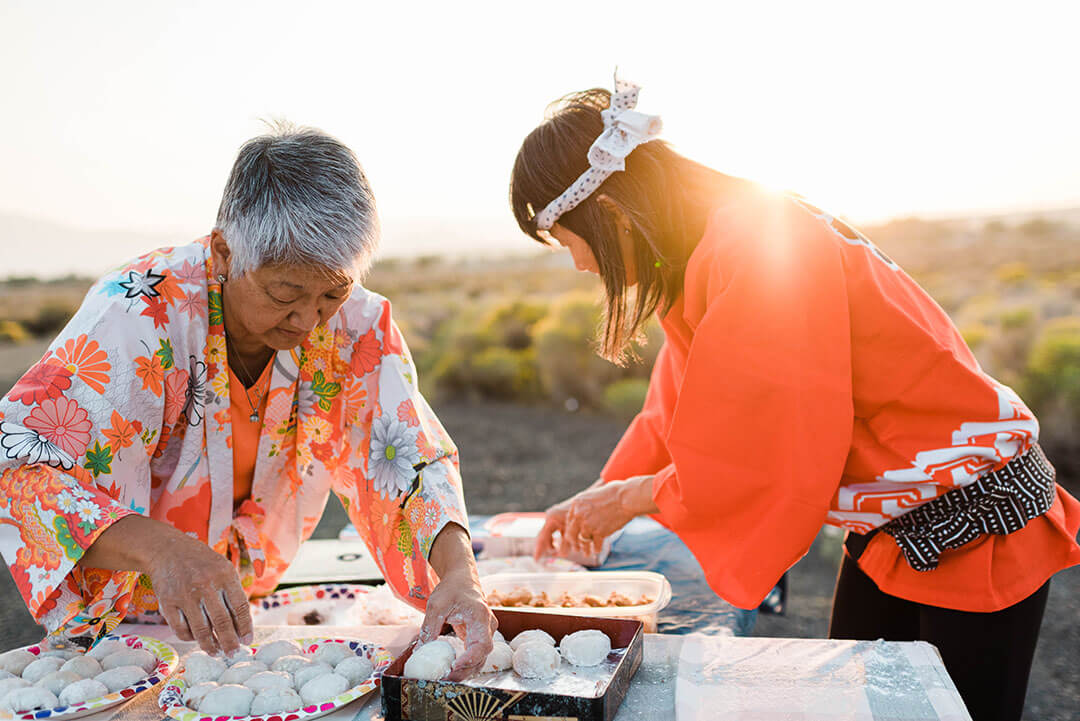
“Some people steam the rice, some are pounding, some are rolling them into small balls and dipping them in kinako (soybean powder) and sugar or putting anko (sweet red beans) in the middle. Or my favorite are dipped in soy sauce and wrapped with seaweed,” Shimbo says. “We all eat together and celebrate our community spirit.”

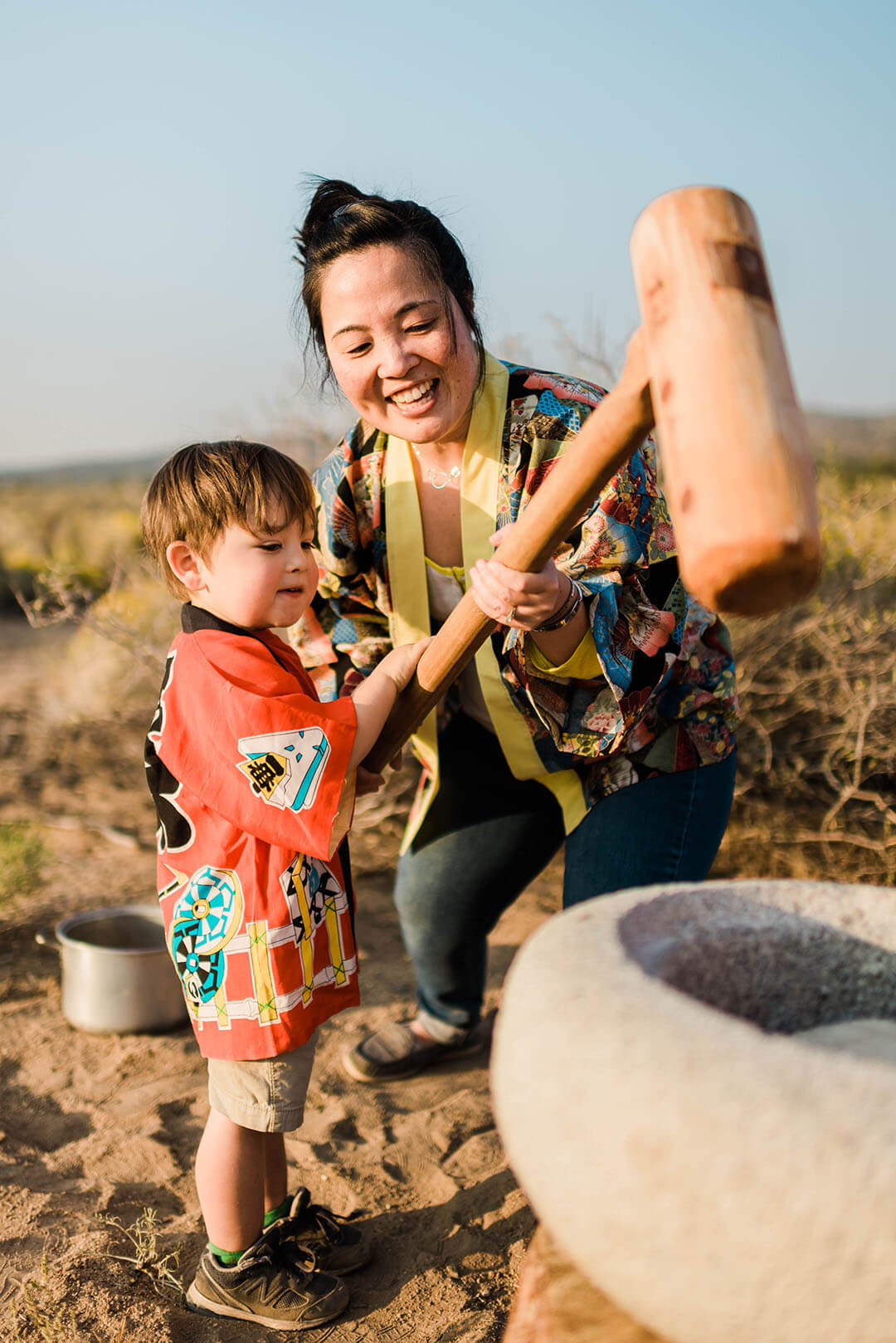
Of course, this is by no means an exhaustive list of international cuisines that have flourished in the Reno-Tahoe area — it’s merely a small sampling of the diversity that exists within our food scene. With German, Austrian, Tongan, Taiwanese, Greek, Indian, Ethiopian, and many more cuisines in the mix, it’s possible to experience a world of food without venturing far from home. And where restaurants leave off, many locals are happy to share their beloved recipes from their nations of origin, either at home with friends and family or at festivals and other cultural events.
“I was very fortunate to grow up with friends from various ethnic groups, where they opened their homes and introduced me to their delicious cuisines,” Johari says.
We can all be that fortunate, if we simply take time to look.
Writer Nora Heston Tarte is a longtime Reno resident. You can follow her local exploits and travel adventures on Instagram @Wanderlust_n_wine.
Chicken in Coconut Gravy
(courtesy of Rina Johari, Singaporean Malay home cook in Reno. Serves 4 to 6)
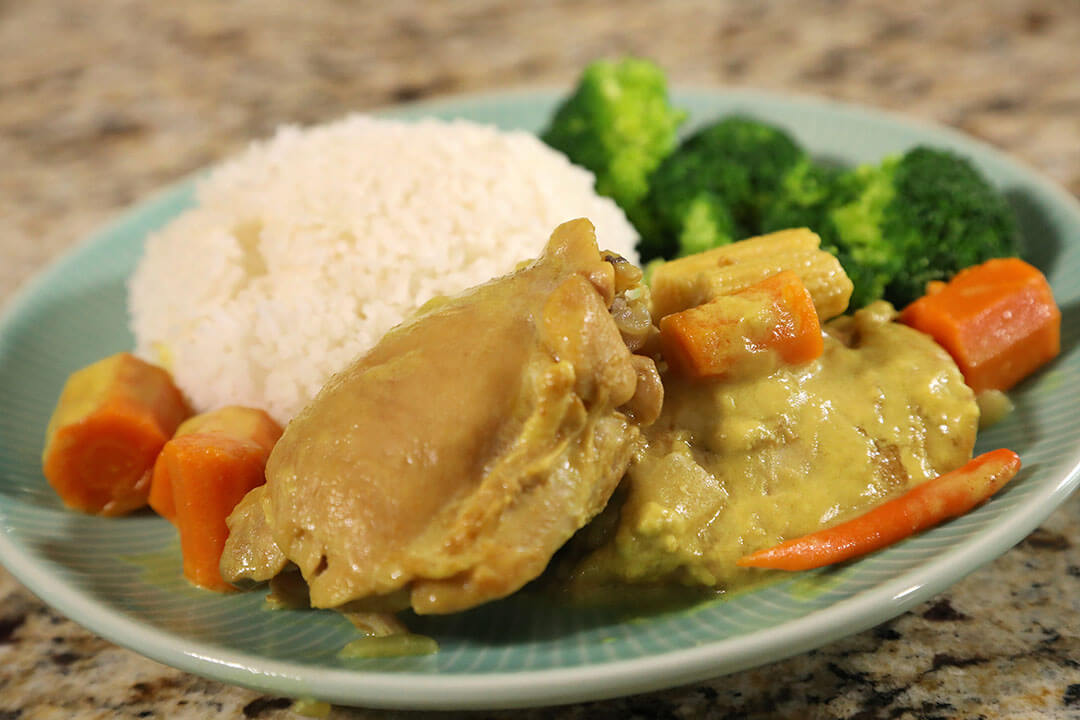
2 pounds bone-in chicken thighs, skins removed
2 tablespoons ground turmeric
3 stalks lemongrass, peeled
1½ inch galangal segment
1-inch ginger segment
6 cloves garlic, sliced
3 carrots, peeled and sliced into 1-inch pieces
1 yellow onion, sliced
3 to 5 Thai chiles
1 cube chicken bouillon
1 can coconut milk
Water
Salt, to taste
Cover chicken with ground turmeric and salt. Let sit. Cut top off lemongrass and leave about 4 to 5 inches with the bulb. Peel 2 to 3 outer layers and bruise bulbs with mortar and pestle. You will smell the aroma of the lemongrass when it is ready. Then, bruise the galangal and Thai chiles. Brown chicken in pressure cooker on both sides. Remove chicken and fry onions, garlic, ginger, galangal, lemongrass, and Thai chiles until fragrant. Put chicken back into pressure cooker and add coconut milk and equal amount of water. Add carrots and bouillon cube and stir. Set pressure cooker for 25 minutes. Serve with steamed white rice.
Sukiyaki
(courtesy of Chrisie Yabu, Japanese home cook in Reno. Serves 4)
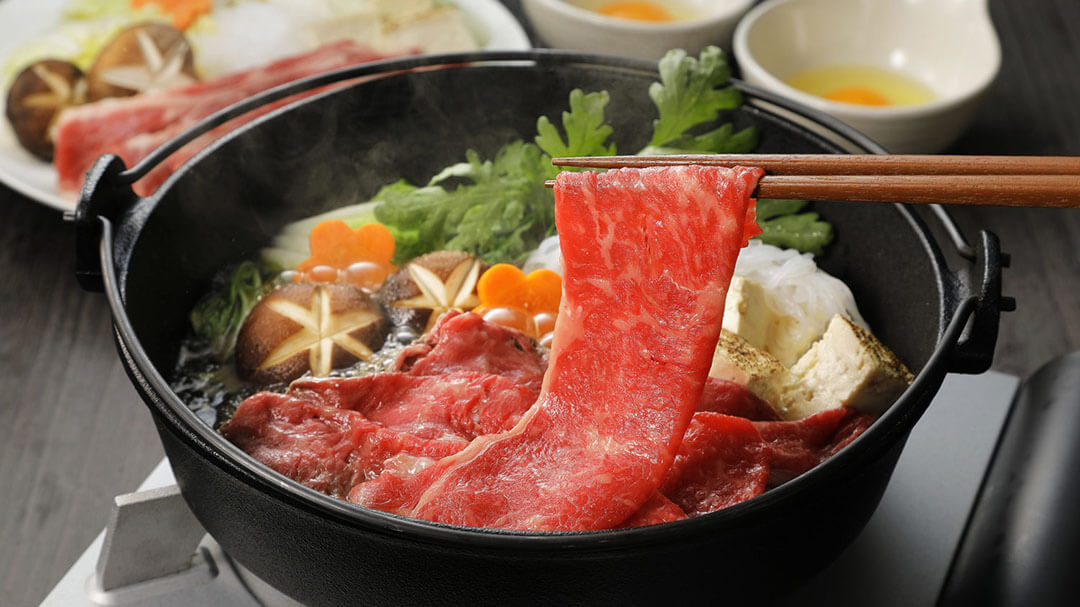
16 ounces tofu, firm or extra-firm
1 ounce dry shiitake mushrooms
1 napa cabbage
7 ounces shirataki yam noodles
1 bunch green onions, sliced
1 cup water
1 package beef, thinly sliced
1 package pork, thinly sliced (meats may be substituted with thinly sliced chicken, peeled shrimp, or mild fish)
6 ounces pink or white kamaboko, sliced
1 medium yellow onion, sliced
1¼ cups bean sprouts
2 cups Yamasa or Kikkoman low-sodium soy sauce
¼ cup mirin
2 tablespoons sugar
Dash of hondashi bonito soup stock (optional)
1 8-ounce can water chestnuts (optional)
To prepare, cut tofu into 1-inch slices. Rehydrate shiitake mushrooms (about 5) or slice white mushrooms. Cut napa cabbage into 2-inch pieces. Rinse and drain shirataki yam noodles, bean sprouts, and water chestnuts (if using) and set aside.
In cast-iron pot, combine soy sauce, 1 cup water, mirin, sugar, and a sprinkle of hondashi (optional). Bring to boil and reduce to medium heat. Add meat and cook for 3 to 4 minutes. Add tofu, shiitake mushrooms, Napa cabbage, green onion, yellow onion, bean sprouts, and water chestnuts (optional), and cook 8 to 10 more minutes, reducing heat to low when mixture comes to boil.
Serve with steamed Japanese rice. Garnish with remaining chopped green onions, raw egg, or red ginger (optional).
You can find these ingredients at Yim’s Produce & Seafood in Sparks. You can find the vegetables at your neighborhood supermarket.
RESOURCES
Ready to try preparing some international cuisines at home? Stock up on ingredients from these international markets in the Reno-Tahoe area.
168 Asian Market
3090 S. Virginia St., Reno
775-823-9918 • 168asianmarketreno.com
A&J Oriental Market
2660 Lake Tahoe Blvd., South Lake Tahoe
530-542-4443
Aladdin’s Market & Kitchen
1180 Holcomb Ave., Reno
775-737-4244 • Aladdinsmarketreno.com
Asian Mart
115 E. Moana Lane, Reno
775-409-4002
Centro Market
2794 Hwy. 50, Carson City
775-882-8746
Empanash
900 Ski Run Blvd., Ste. 106, South Lake Tahoe
530-600-4455 • Empanash.com
Frida’s Meat & Grocery
1758 Hwy. 395, Ste. B, Minden
775-392-2980
Hacienda Market & Grill
2270 E. William St., Carson City
775-461-3322 • Haciendamarket.com
HK Market
2124 Greenbrae Drive, Sparks
775-356-8504
International Market
225 Gentry Way, Reno
775-825-5258
Kabayan Multi-Mart
321 Fairview Drive, Carson City
775-841-1688
Manila Hongkong Store & Kitchen
2233 Oddie Blvd., Sparks
775-331-7877
Mila’s Global Food & Gift Market
628 Mill St., Reno
775-622-9151
Siam Market-Tahoe
2218 Lake Tahoe Blvd., South Lake Tahoe
530-416-6479 • Siammarkettahoe.business.site
Turmeric Grocery
9333 Double R Blvd., Ste. 400, Reno
775-800-6575
Yim’s Produce & Seafood
1210 Rock Blvd., Sparks
775-356-8949 • Yimsmarket.com
